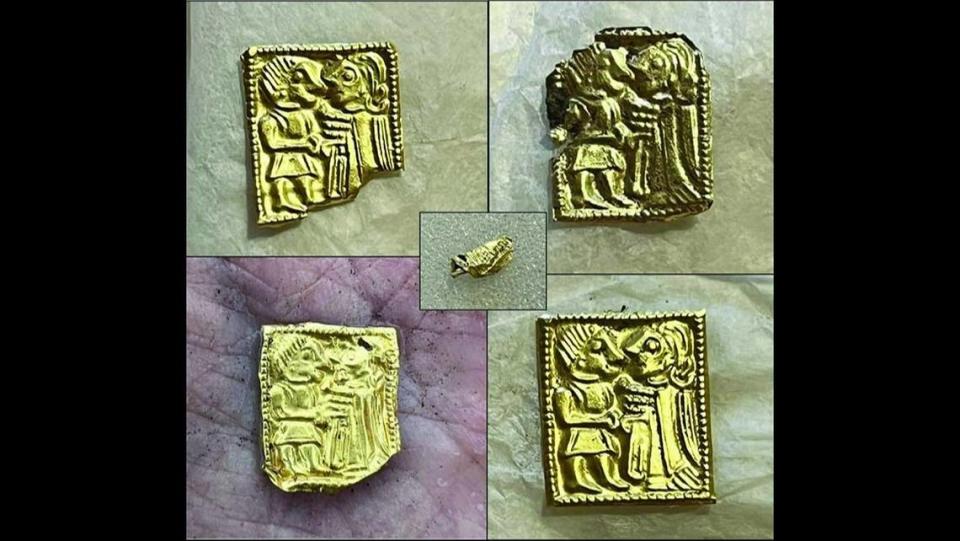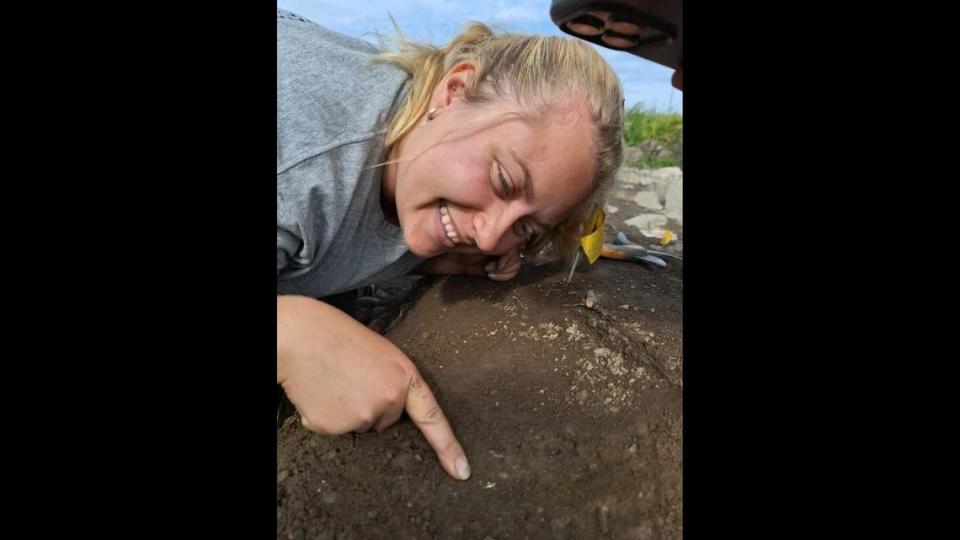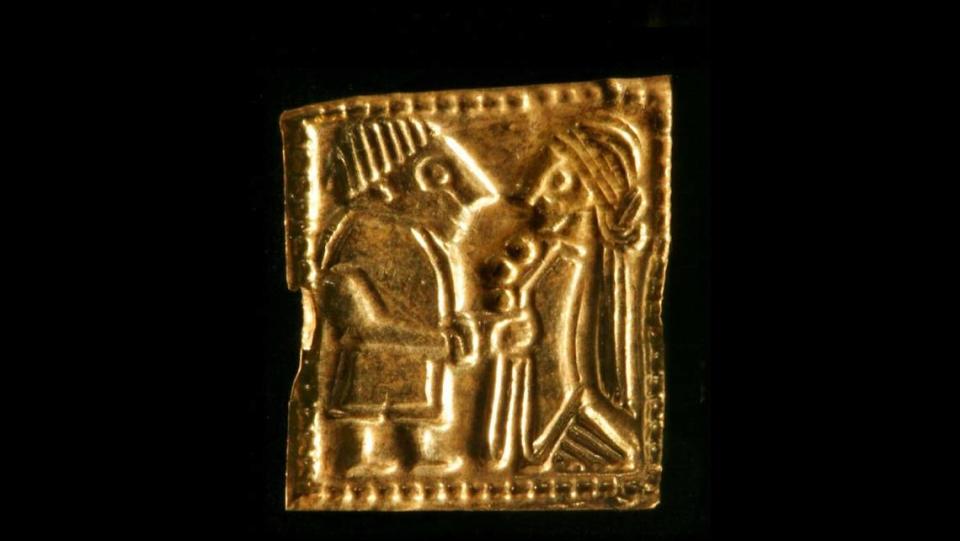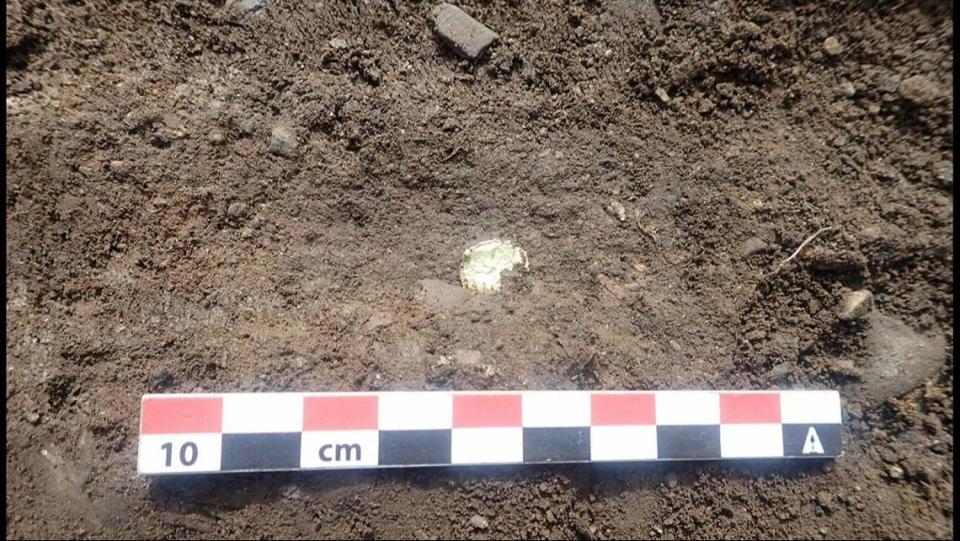Shimmering item in dirt turns out to be rare 1,200-year-old treasure in Norway. See it
Thirty years ago, while driving along a highway in Norway, Harald Jacobsen noticed some peculiar-looking soil — and stumbled upon the ruins of an ancient pagan temple.
Since then, archaeologists have uncovered 30 gold foil pieces at the temple of Hov in Lillehammer, but there has never been a full excavation. Now, due to construction on the road, an extensive survey of the remains is taking place.

Despite the success of previous archaeologists, the team conducting the current excavation prepared itself for the possibility that there could have been no more gold figures at the site.
But their preparation was for naught. While on the site, archaeologists spotted something shimmering from the dirt and unearthed five more gold foil pieces, according to a Sept. 19 article from Sciencenorway shared by the Kulturhistorisk museum, which is overseeing the excavation.
Archaeologists described the figures as square-shaped gold about the size of a fingernail and as thin as paper, according to a Sept. 12 Facebook post from Nicolai Eckhoff.


Each piece is stamped with a motif, typically of a man and woman facing each other, Eckhoff said in his post. The woman is typically wearing a dress, sometimes with a cloak, while the man is in a shorter robe. Both figures often have jewelry, different hairstyles and are holding objects.

Eckhoff said experts aren’t entirely sure what the coins mean, but they have several theories.
Most agree the coins have a ritual meaning. It has been suggested that the couple motif printed on the pieces is symbolic of an ancient mythical wedding of a god, meaning the coins were likely used as an offering in weddings or fertility rituals, according to Eckhoff. Others think the gold pieces could have been used as payment in other rituals.

The five pieces found most recently were discovered within the walls and foundation holes of the temple, so archaeologists believe they may have been used as an offering for protection at the temples, archaeologists told Sciencenorway.
“It’s extra special that we can link the gold foil figures to the various parts of the building’s construction,” Kathrine Stene, who is leading the project, told the news outlet. “The gold foil figures in the post hole were not visible to people. Those we found in the wall would also not have been visible to others. So this doesn’t appear to be an admission ticket, but rather an offering or a religious act to protect the building.”
Archaeologists told the outlet they believe the coins date to between 550 to 800.
Lillehammer is about 80 miles north of Oslo.
Google Translate was used to translate a Facebook post from Nicolai Eckhoff and a story shared by the University of Oslo’s Kuturkistorisk museum.
Ancient temple for Aphrodite and opulent treasures found in underwater ruins. See them
2,000-year-old grave site — teeming with treasures — discovered in Germany. See them
1,500-year-old palace-like home was hidden by jungle foliage — until now. Take a look

